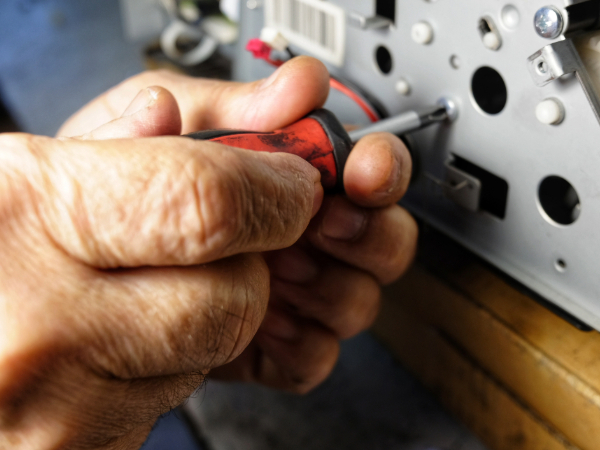
When Bill Czappa was a boy, he honed his tinkering skills with his favorite toy: an erector set. Hardened steel rods and screw clamps allowed the construction of hinges and the transmission of mechanical power via rotating parts such as pulleys, gears, wheels, and levers. But what it really built was a lifelong love of tinkering, problem-solving, and fixing electronics. A longtime owner of an electronics repair business, Czappa saw the commonplace practice of fixing non-working electronics diminish as equipment has become less durable, more disposable, and harder to repair.
One of the first signs of trouble came after U.S. television maker Zenith moved much of its manufacturing to Mexico in the early 1990s. “Zenith’s slogan used to be ‘Quality goes in before the name goes on,’” Czappa said in an earlier interview. “The first product of theirs that came into the shop for repair, the name tag had come off.”
The demand for cheap goods was further enabled by cheap disposal. This moved the public away from repair to “replace” by buying new. Electronics became more challenging to fix due to poor design, low-quality components, and manufacturers not supplying replacement parts.
More concerning, repair has declined as a vocational career option. As recent generations of young people traded in erector sets for video games, this has meant “game over” in finding qualified employees with repair skills.
These challenges have led to many repair businesses closing. With them, knowledge, skills, and history are also lost while more e-waste is created. Even though products may not be as durable as they once were, Czappa advised not giving up on equipment so quickly. Before heading to an e-waste drop-off, here are some tips:
- Printers: Inkjet cartridges often need to be replaced because the ink has dried up, not because they’re empty. Don’t let the printer sit for long—try to print something once a week.
- DVD players: The reason your player quit working? It simply may need to be cleaned. (Czappa estimates that 60% of the “broken” DVD, CD, and other players need a good cleaning or the circuit board properly soldered.) With the rising cost of streaming services, you may decide to return to your old players and that stored pile of DVDs.
- Antennas: Cancel cable by using an antenna (and the picture is often better).
- Replacement Parts: Buy products from companies that stock parts.
- Durability: “Cheap” often comes with a cost, both financially and environmentally. (Most products today last two years before needing repair, compared to 10 years for a product made 15 years ago.)
Let’s not lose local repair business. Whether it’s fixing shoes, altering clothing, or proactively scheduling regular maintenance on your vacuum cleaner or lawn mower, these practices have many benefits. You’ll be valuing resources and keeping them from the disposal system, but more importantly, you will be investing in the art of repair and knowledge for the future.
Image credit: robypangy | iStock | Getty Images Plus
This information was edited from an article that originally appeared in the publication of our client, Burbank Recycle Center, in their “Reduce, Reuse, Rethink Burbank Public Works Newsletter,” Spring 2018. Mr. Czappa’s advice is still pertinent today.
